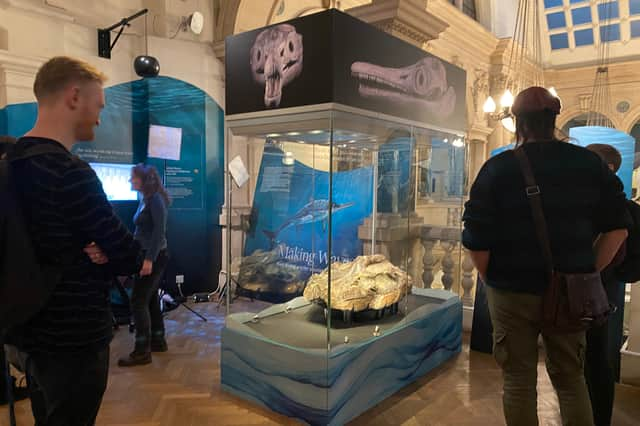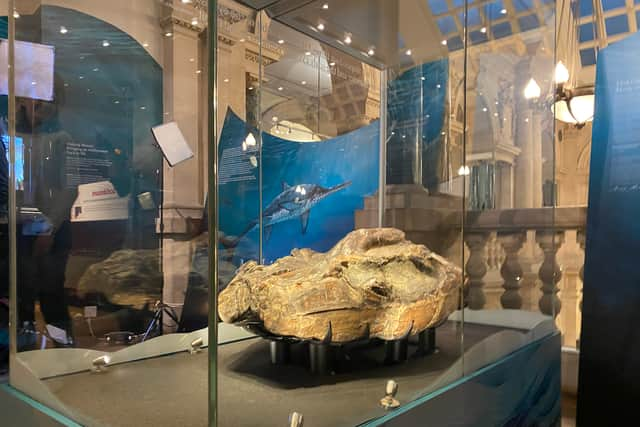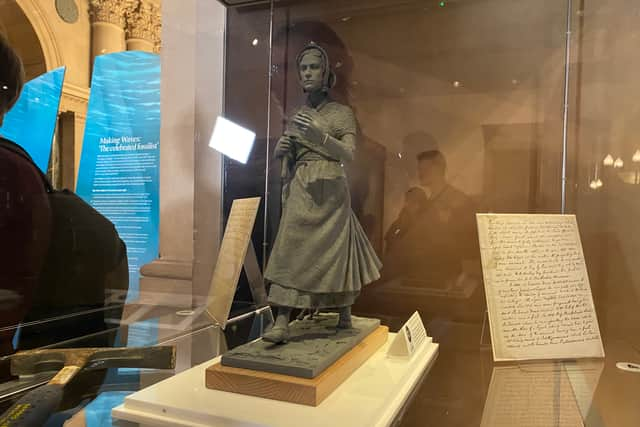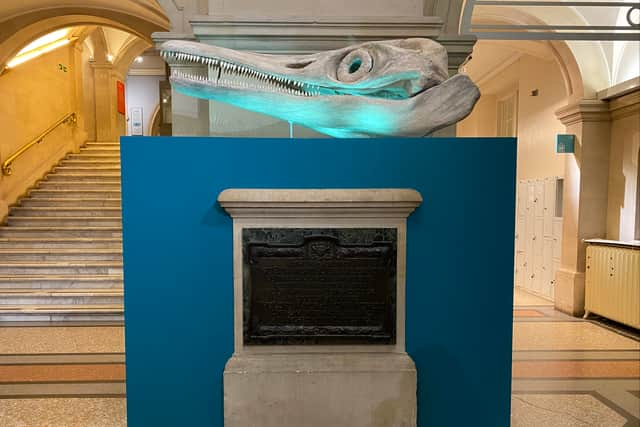Huge ‘giant sea dragon’ skull goes back on display at Bristol Museum for new exhibition


A ‘giant sea dragon’ fossil estimated to be 190 million years' old has gone back on display at Bristol Museum & Art Gallery, following conservation work.
The huge skull of a type of ichthyosaur called a Temnodontosaurus is now a permanent part of the museum’s Dinosaur Gallery.
Advertisement
Hide AdAdvertisement
Hide AdThe fossil was found by palaeontologist Mary Anning on a beach in her hometown of Lyme Regis when she was 14-years-old in 1813.
The skull has been in the museum’s collection since 1845 but has not been on display since 1989 due to its ‘complex conservation needs’.


The fossil is part of the new Making Waves exhibition, which also includes a maquette of the Mary Anning statue that was unveiled in Lyme Regis in 2022.
On loan from The Charity and Trustees of Mary Anning Rocks, the small model shows Mary striding across a rock surface covered in some of her most significant finds, holding an ammonite fossil, her geological hammer, and a basket.
Advertisement
Hide AdAdvertisement
Hide AdA specially commissioned life-size reconstruction of a complete Temnodontosaurus skull has also been put on display in the museum's main hall, created by sculptor and artist Tone Hitchcock.
The actual skull had been mounted in mortar in a wooden box for more than a hundred years, with the lower portion hidden.
When the wood and mortar were removed, so that a new mount could be made, several deep tooth marks were found on either side of the skull.
Estimates suggest that the ichthyosaur would have been about 7m long when alive, but it appears to have been eaten by something even larger.
Advertisement
Hide AdAdvertisement
Hide Ad

Research into this new information is being carried out by Dr Dean Lomax, the UK’s top ichthyosaur expert, and Nigel Larkin, the palaeontological conservator who worked on the fossil.
Larkin said: “It was an honour to work on a fossil found by Mary Anning, particularly one she found when so young.
“Even though the fossil is very large, heavy and fragile, it is a thing of beauty.
“To find new information about the specimen when working on it, especially regarding how these ancient animals interacted with one another, was the icing on the cake and one of the highlights of my career.”
Advertisement
Hide AdAdvertisement
Hide Ad

Lomax added: “I first examined this important fossil in 2011, but it required special cleaning before it could be studied in detail.
“As part of my research on ichthyosaurs, I’ve examined practically every single ichthyosaur that Mary Anning found, or at least the ones we know of.
“It amazes me that even after 200 years her discoveries, like this one, continue to reveal new information.”
The Making Waves exhibition is free and opens to the public tomorrow (Saturday, January 13).
Comment Guidelines
National World encourages reader discussion on our stories. User feedback, insights and back-and-forth exchanges add a rich layer of context to reporting. Please review our Community Guidelines before commenting.